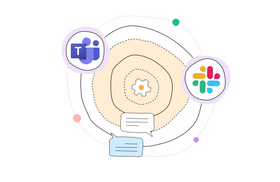What Is Data Integrity in a Database?
There are two different types of data integrity: physical integrity and logical integrity. Both are critical to every successful business.
Published April 28, 2022.
Every database, regardless of how big or small, has data integrity. It have low integrity or high integrity. A low database integrity means that the data is not consistent. It is unreliable and has errors such as outdated information. Having a high integrity database is important for every business because executives make important decisions based on their company's data. Besides having high or low data integrity, there are two other types of data integrity.
Types of Data Integrity
Physical Integrity
High physical data integrity means your data is protected against natural disasters, hackers, power outages, floods, theft, and so on. It also includes human error and storage attrition—any calamity that could result in your data operators no longer being able to access data.
Logical Integrity
This type of integrity is further split and categorized into four types:
- User-defined integrity Do you keep your users' rights up to date when you have employees leaving and joining your company?
- Entity integrity Have you ensured that your data has not been recorded multiple times? Is each data item unique, and are there no null fields in the tables? Have you made sure your data is not in separate silos, causing inconsistency and disconnects?
- Domain integrity Does your domain have rules and processes to restrict the format, type, and volume of data? Is every column in your relational database in a defined domain?
- Referential integrity Do you make sure that only the required changes, removals or additions take place via rules that have been implemented into the database’s structure?
Related Articles

Why You Need to Supercharge Your Document Management Search With Multi-Tool Search
Roy Shaked
March 30, 2022

Dropbox Search Sucks? Here are 5 Tips to Advance it
Roy Shaked
April 11, 2023

Enterprise Search Software: Key Features & Benefits
Brody Hall
August 16, 2023

5 Ways to Integrate Slack and Teams for Cross-Platform Messaging
Marcel Deer
May 10, 2023

5 Ways to Align Internal & External Communications (+Examples)
Marcel Deer
February 24, 2023
Related Posts
Ashley Stander
What Causes Data Integrity Issues?
Brody Hall
What Is Data Federation?
Marcel Deer